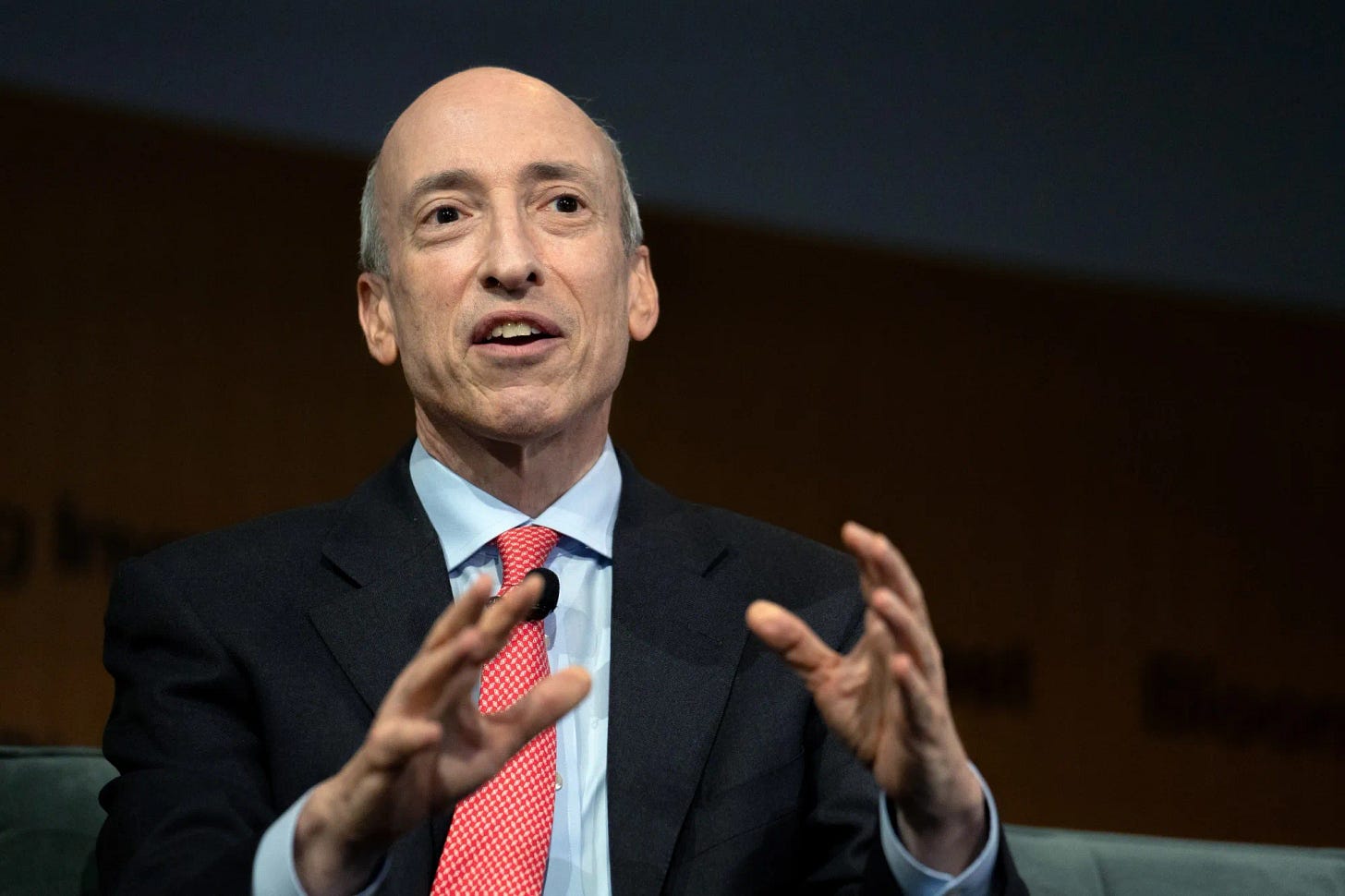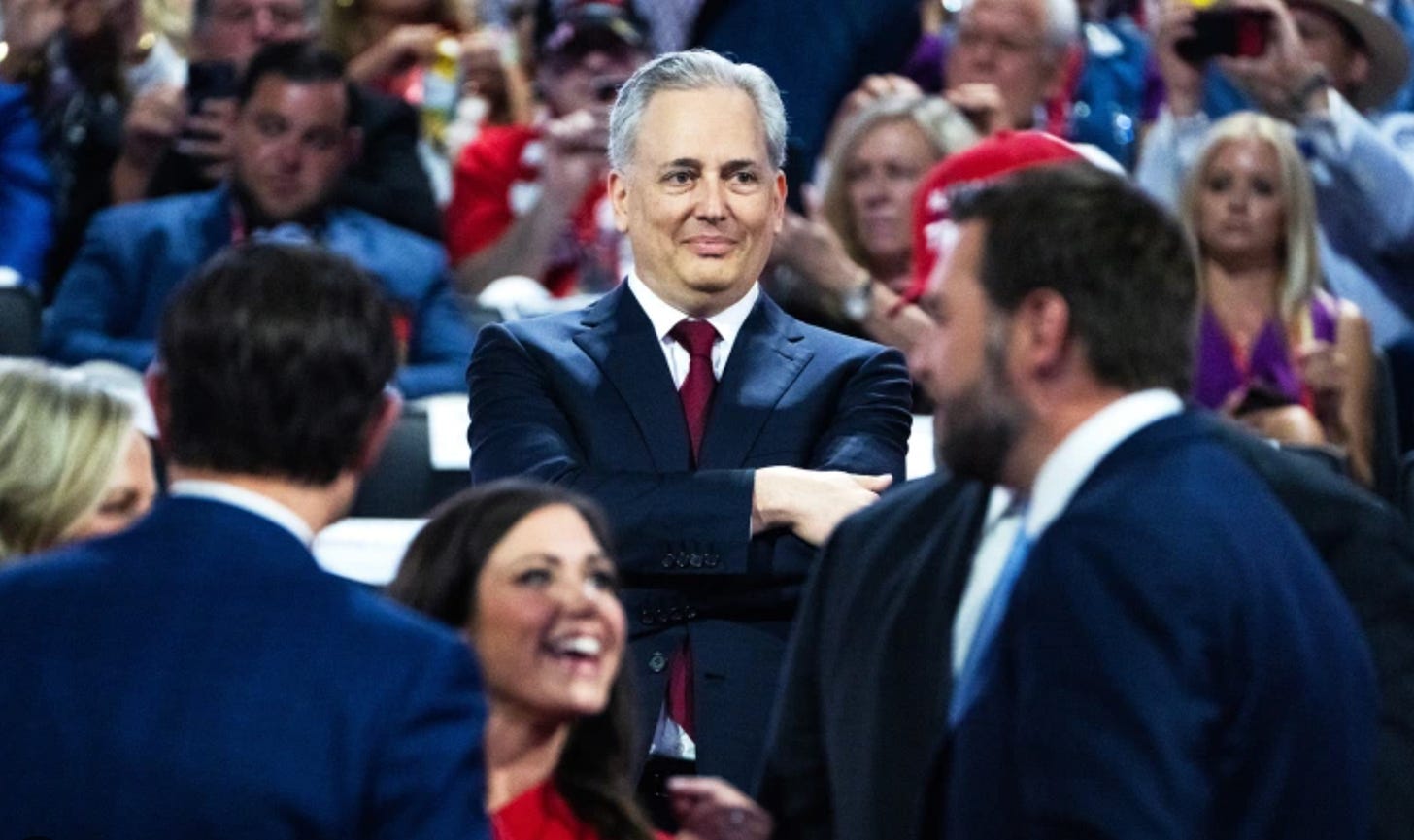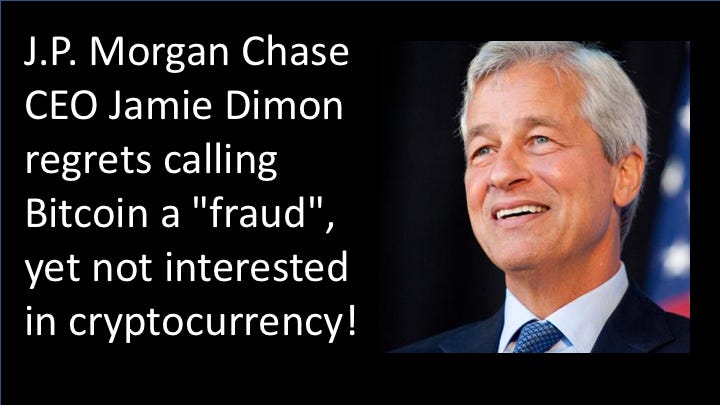Crypto’s Wild West is Over: How the GENIUS Act Changes the Game
From the Bitcoin whitepaper to stablecoin regulations - what founders and investors need to know about crypto’s journey into legitimacy.
After years of scandals, uncertainty, and regulatory rollercoasters, the recent GENIUS Act marks a new chapter for crypto in America. But what exactly is changing, and what does this mean for founders, investors, and managers? Here’s your quick, clear guide to crypto’s journey, from Bitcoin’s invention to the game-changing rules of today.
1. Why Does Crypto Exist?
Cryptocurrencies were invented as a direct response to the global financial crisis of 2008. Banks had gambled, lost, and were bailed out by taxpayers. Public trust in traditional finance collapsed. In October 2008, the mysterious Satoshi Nakamoto1 introduced Bitcoin through the now-famous whitepaper, proposing an electronic cash system free from banks and governments.
What is Blockchain Anyway?
Simply put: Blockchain is a decentralized digital ledger that securely records transactions without banks or central authorities. Thousands of computers maintain identical copies of this ledger. Each new transaction is added in a "block," which connects to the previous one, forming a chain. It’s transparent, secure, and resistant to manipulation (Investopedia).
Crypto’s Rocky Start
The crypto world attracted huge attention but faced equally huge issues. Many cryptocurrencies were purely speculative, with zero underlying value. The ICO (Initial Coin Offering) boom of 2017 quickly turned sour, with many projects proving fraudulent, costing investors billions (Cointelegraph). Even major exchanges weren’t safe. In 2014, Mt. Gox, once the world’s biggest crypto exchange, collapsed after losing around 850,000 Bitcoins (BBC). More recently, in 2022, crypto suffered another devastating blow when Sam Bankman-Fried’s (SBF) exchange FTX dramatically collapsed, evaporating billions overnight (Reuters). These repeated disasters intensified calls for regulation, clear rules to stop the chaos.


2. The Crypto Regulation Rollercoaster: A Brief History
With nearly 80% of ICOs in 2017 turning out as scams, crypto became an easy target for politicians and regulators (Cointelegraph). Governments felt pressure to act, and they did, though often chaotically.
In the early years, cryptocurrencies largely operated under the radar. Regulators struggled to even define what crypto was, security, currency, or commodity? The lack of clear rules frustrated companies, investors, and politicians alike.
Early Years (2008–2016): From Obscurity to Wild West
In its first years, Bitcoin flew largely under the radar. The early community was small, mostly technologists, libertarians (think Peter Thiel), and privacy advocates.
Initially, regulators didn’t pay much attention. Bitcoin and other cryptocurrencies operated in a gray zone without clear rules or oversight. But that changed quickly as crypto became a tool for crime: Silk Road, an infamous online black market, used Bitcoin heavily for illegal transactions (manly known for drug trafficking, but also illegal weapons, hacking services, fake identifications, etc. (wikipedia).
The first major regulatory wake-up call for crypto founders came in 2013, when the FBI shut down Silk Road and arrested its founder Ross Ulbricht, condemned to two life sentences without parole plus 40 years. 11 years later he was pardoned by President Donald Trump.2

This marked the moment regulators realized crypto wasn’t just a tech experiment, it was also a potential threat. Yet they still struggled to define exactly what crypto was, or how to manage it.
From that point, until around 2016, crypto became the financial world’s "Wild West" full of innovation and risk, but still largely beyond regulatory reach.
2017: Jamie Dimon, CEO JPMorgan, called Bitcoin a “fraud” and warned he’d fire any employee trading it, criticizing it as a tool for criminals. (Time)
Trump’s First Term (2017–2021): Initial Skepticism
Under President Trump’s first term, crypto was treated cautiously. Trump himself publicly criticized Bitcoin, saying cryptocurrencies were volatile and "based on thin air" (CNBC). His administration did little to clarify rules, leaving the regulatory environment vague and uncertain.
2018: Warren Buffet called Bitcoin “rat poison squared”, warning investors they’d come to a “bad ending”. (nasdaq)
Biden Administration (2021–2024): Crackdown by Enforcement
When Biden took office, the pendulum swung to aggressive enforcement. SEC Chair Gary Gensler led a hard-line approach, suing major players like Coinbase, Ripple, and Binance. Senator Elizabeth Warren pushed for tighter regulation, advocating for a Central Bank Digital Currency (CBDC) to increase government oversight (Reuters).

This “regulation by enforcement” drove innovation and many crypto companies offshore, increasing the chaos rather than reducing it.
That turbulent history brings us right to the present and the recent passage of the GENIUS Act, marking a fundamental shift in how crypto is regulated in the U.S.
3. GENIUS Act: What’s Actually in the Bill?

The GENIUS Act is America’s latest - and biggest - step toward clearly regulating cryptocurrencies, especially stablecoins. Here’s what you, as founders and investors, should know:
Stablecoins: No More Guesswork
Stablecoins are cryptocurrencies designed to maintain a stable value, usually pegged 1-to-1 to a currency like the U.S. dollar. Tether (USDT) and USD Coin (USDC, issued by Circle) are the best-known examples. Until now, stablecoins operated in regulatory limbo (Investopedia).
In crypto’s early days, exchanging traditional currencies (like USD or EUR) for Bitcoin was complicated. Many banks were skeptical, and around 2016 credit card companies basically blocked transactions related to cryptocurrency, making it very difficult to move fiat money into crypto (no easy “on-ramp”).

Cashing out crypto profits back into fiat was equally cumbersome. Tether simplified this significantly: traders could quickly convert Bitcoin into USDT - essentially digital dollars - without leaving the crypto ecosystem. USDT offered fast, simple, and stable on-ramps and off-ramps, enabling traders to protect profits and re-enter crypto markets instantly, contributing significantly to Tether’s rapid adoption.
The GENIUS Act puts an end to that:
Mandatory 1:1 Reserves:
Every stablecoin issued must be backed by an equivalent amount of U.S. dollars or low-risk U.S. government assets, held in regulated financial institutions (Coin.Space).
Quarterly Audits:
Stablecoin issuers now face mandatory, regular audits from third-party firms to prove they’re holding those reserves, providing clear and consistent transparency (Gibson Dunn client alert).
Offshore Providers Must Comply:
Offshore stablecoin issuers (like Tether) must establish U.S.-based operations under the law or lose access to U.S. customers after a three-year transition period (Wikipedia – GENIUS Act).
What’s the Impact?
Market Clarity:
Companies and investors finally get clear, enforceable rules. Regulatory uncertainty shrinks, boosting market trust and credibility (WSJ).
Stronger Dollar:
Every stablecoin in circulation directly translates into increased demand for U.S. Treasuries and dollars, reinforcing global financial dominance (MarketWatch).
Reduced Risk:
Investors now know exactly what they’re getting into. Stablecoins become safer, more reliable, and more attractive to traditional financial institutions (Wired).
What’s Next?
The GENIUS Act addresses stablecoins first, but more legislation is coming. Next is the Clarity Act, aiming to clearly define how other crypto assets—like Bitcoin, Ethereum, and others—will be regulated: as securities, commodities, or currencies (Investopedia).
But for now, founders and investors can breathe easier: stablecoins just got their rulebook. This changes the U.S. crypto game—big time.
But for now, founders and investors can breathe easier: stablecoins just got their rulebook. This changes the U.S. crypto game, big time.
Want to dive deeper?
For an in-depth exploration and further sources on this chapter, see this footnote.3
4. What Industry Leaders and Analysts Say (External Sources & Commentary)
The GENIUS Act has triggered strong and mixed reactions across the industry. Here’s a quick overview of what key voices are saying:
Industry Supporters: Finally, Clarity
Many industry leaders have welcomed the new clarity. Coinbase CEO Brian Armstrong praised the law, stating it creates a safe path for institutional investors to finally enter the crypto market with confidence (Business Insider).

Circle (issuer of USDC) echoed this, saying clear regulation directly supports innovation and adoption, and positions the U.S. as a global crypto hub (Moneyweb).
The Winklevoss twins from Gemini highlighted how mandatory reserves and audits mean safer markets, less fraud, and greater legitimacy for crypto overall (Reuters).
Even traditionally cautious institutions like JPMorgan now see a clearer path to integrating crypto into their offerings, recently exploring crypto-backed loans (Financial Times).
Critics: Concerns over Centralization
Privacy advocates and crypto purists aren’t entirely happy. They fear regulation risks eroding the core decentralized principles crypto was built on. Critics argue mandatory reserves and centralized audits go against crypto’s original goal of financial independence (Cointelegraph).
Some industry veterans also worry that the Act may push smaller, innovative projects offshore or discourage open-source experimentation due to compliance burdens (CoinDesk).
Analysts: Long-term Positive, Short-term Adjustment
Analysts generally view the GENIUS Act as positive overall, though not without challenges. Moody’s and Fitch both note that clear stablecoin regulation significantly reduces systemic risk, making the U.S. market more attractive long-term (Reuters).
However, they caution a short-term shake-up might happen as offshore issuers scramble to comply, possibly causing volatility as the market adjusts to new rules (Bloomberg Law).
5. Real-World Impact: From JPMorgan to Silicon Valley

What happens now that stablecoins finally have a rulebook? Here’s the play-by-play from both Wall Street and tech hubs:
JPMorgan exploring crypto-backed loans:
JPM Coin: Wall Street’s own crypto:
Since 2019, JPMorgan has used JPM Coin, a dollar-backed token, for internal payments. It processes about $1 billion daily on the Quorum blockchain (Wikipedia).
Silicon Valley gets crypto-genius friendly:
Tech entrepreneurs are responding fast. Palmer Luckey, Oculus founder, is launching Erebor, a bank startup that plans to offer both cash and stablecoin deposits, tailored for tech founders (NY Post). This reflects growing confidence in dollar-backed tokens under GENIUS Act protections.
Regional banks stepping into crypto services:
PNC Bank is partnering with Coinbase to offer crypto trading to its customers, showing that “super-regionals” are adopting digital asset services (Financial Times).
What it all means for founders and investors
Access to capital: Crypto assets can start functioning as institutional-grade collateral.
New financial infrastructure: Banks are no longer ignoring crypto and have started to build around it.
Startup wave: Digital-native financial firms like Erebor are emerging to serve tech-forward businesses, because stablecoins now stand on solid legal ground.
🎧 Producer’s Note
Legendary Black Sabbath co-founder and iconic frontman Ozzy Osbourne passed away yesterday. Known as the “Prince of Darkness,” Ozzy’s haunting vocals, rebellious persona, and relentless energy defined heavy metal and inspired countless artists. With songs like Paranoid and Crazy Train, he consistently challenged musical boundaries and societal norms. Like the best startup founders, Ozzy was fearless, authentic, and never afraid to shake things up. The kind of spirit we respect.
Iron man soon reality.
Best,
Fab 🚵🏼♀️
(Disclosure: I’ve been investing in Bitcoin and other cryptocurrencies since around 2017, and I’m also currently invested in Polychain Ventures since 2020.)
Sources
Despite intense media speculation and several investigations over the years, the real identity behind Bitcoin’s creator remains unknown. The name “Satoshi Nakamoto” is almost certainly a pseudonym. Some prominent people have been suggested (for instance, Craig Wright, Nick Szabo, Hal Finney, and Dorian Nakamoto), but none have provided definitive proof.
Satoshi disappeared from public view in 2011, handing over control of Bitcoin’s code to other developers, and since then has never surfaced again publicly.
So far, the mystery remains unsolved.
Ask ChatGPT for sources, there are many.
Ross Ulbricht received a full and unconditional pardon from President Trump on January 21, 2025. Trump said he fulfilled a promise made at the Libertarian Party convention and acted to “honor” Ulbricht’s mother, Lyn Ulbricht, who campaigned for years against what she argued was an excessive sentence for a nonviolent offender. Supporters argued that Ulbricht’s life sentence was disproportionate compared to other non‑violent offenders; his legal team described the punishment as excessive given he didn’t directly sell drugs. Trump claimed the conviction reflected “weaponization of government” against him . His case attracted significant support from the Libertarian Party, a recognized U.S. political party advocating individual freedoms and limited government, as part of their broader push for criminal justice reform (Reuters, Reason, abc.net)
Footnote (for a deeper dive):
Mandatory 1:1 Reserves:
The Clarity for Payment Stablecoins Act (H.R. 4766) requires issuers to back every stablecoin with reserves held at a 1‑to‑1 ratio, in U.S. currency, demand deposits, or short‑term Treasuries.
Quarterly Audits & Transparency:
The Lummis‑Gillibrand Payment Stablecoin Act (S. 4155) mandates monthly public reserve reporting and third‑party certification, strengthening transparency and oversight.
Offshore Providers Must Comply:
The President’s Working Group report (2021) recommends that stablecoin issuers operate through insured, federally regulated U.S. entities—effectively requiring offshore firms to get licensed or exit the U.S. market.
Institutional Confidence (Market Clarity):
BlackRock CEO Larry Fink has noted that clear regulation for digital assets is essential for unlocking institutional capital deployment.
Strengthening the U.S. Dollar’s Role:
Federal Reserve Chair Jerome Powell has said a regulated stablecoin framework is critical to reinforcing the dollar’s global dominance (as reported in The Hill).
Risk Reduction & Financial Stability:
The FSOC 2023 Annual Report highlights stablecoins as emerging sources of financial risk and supports regulation to address systemic vulnerabilities.
Upcoming Broader Crypto Regulation:
The FIT21 Act passed by the House in May 2024 lays out a structure assigning SEC and CFTC jurisdiction over digital assets, signaling the next wave of regulatory clarity.





